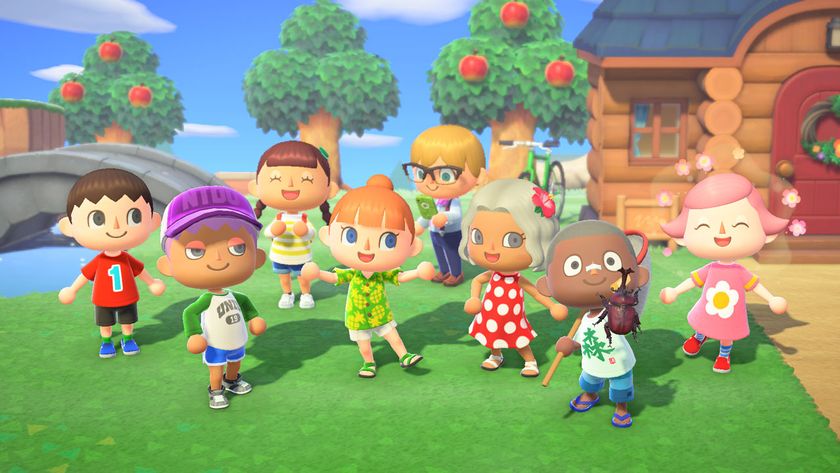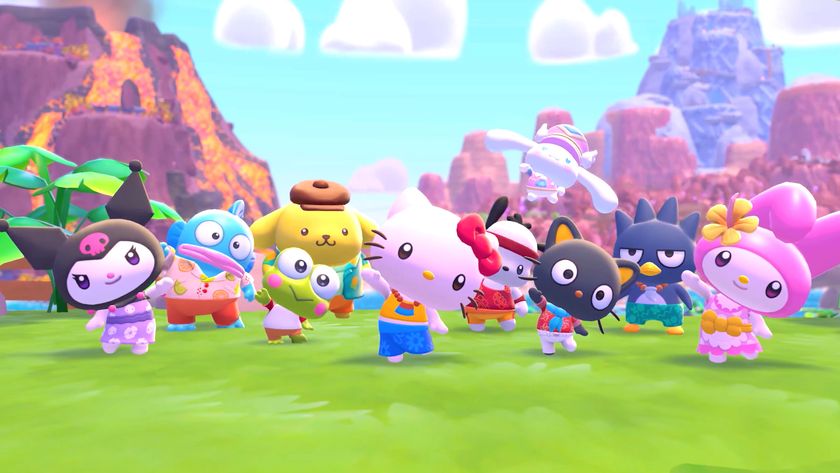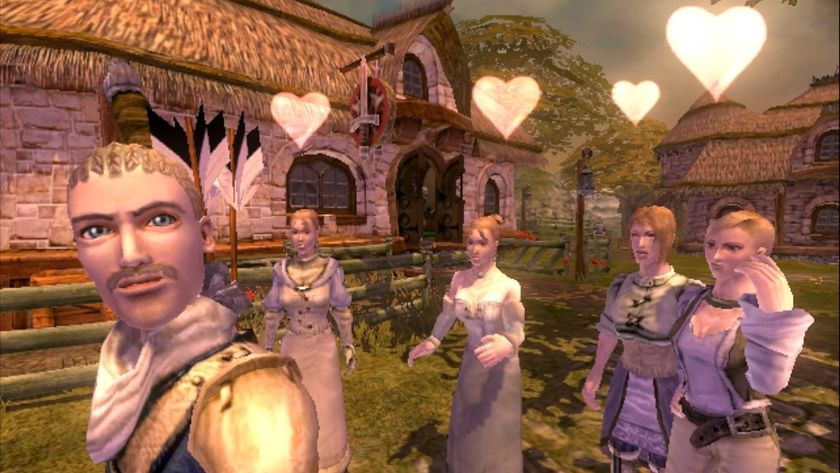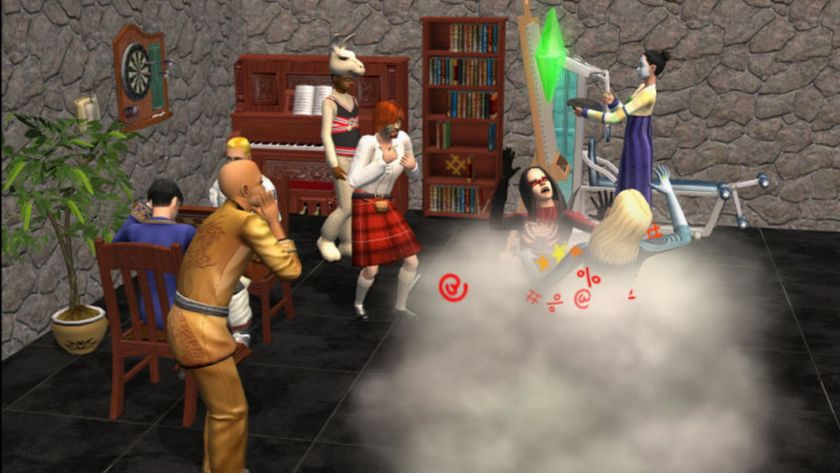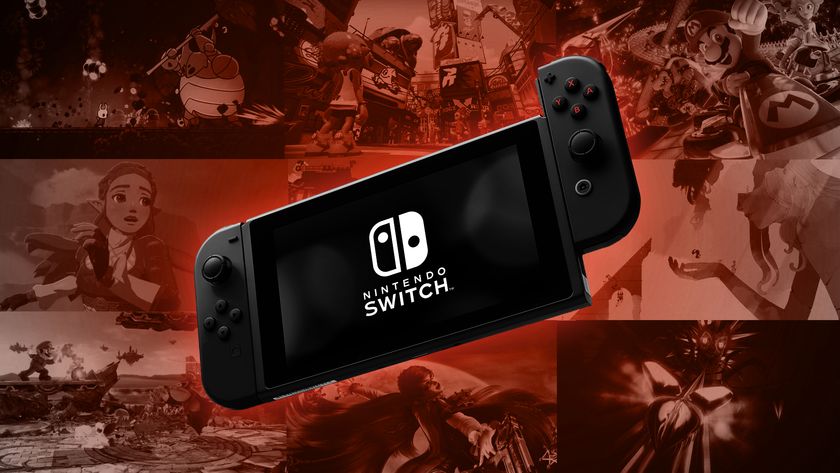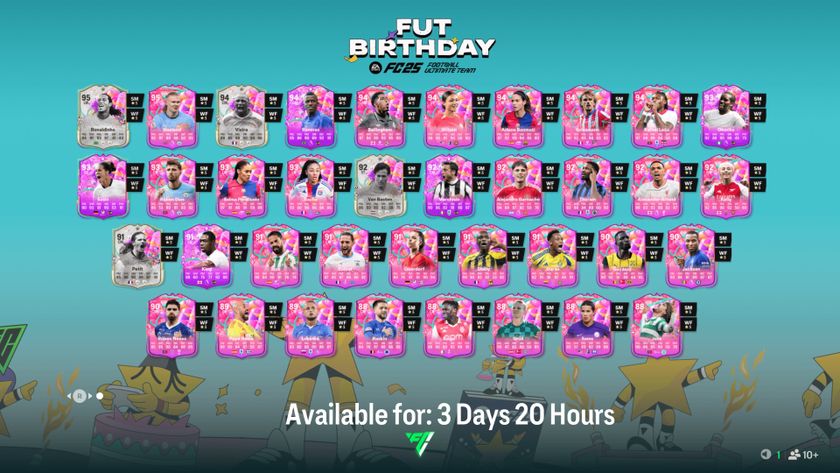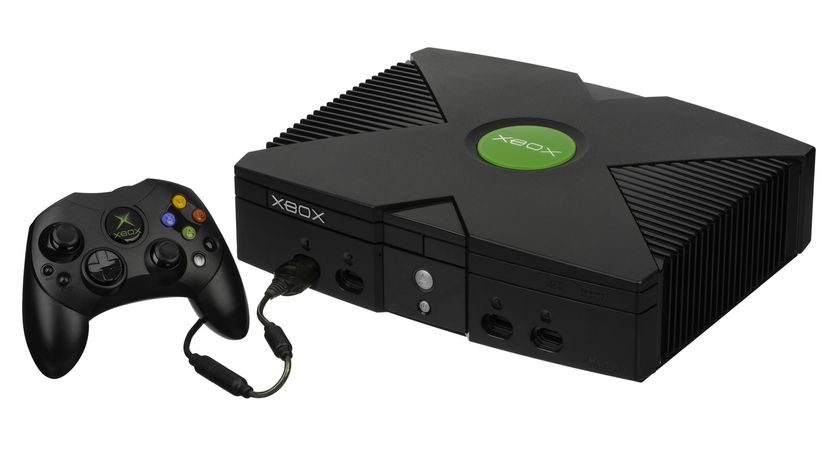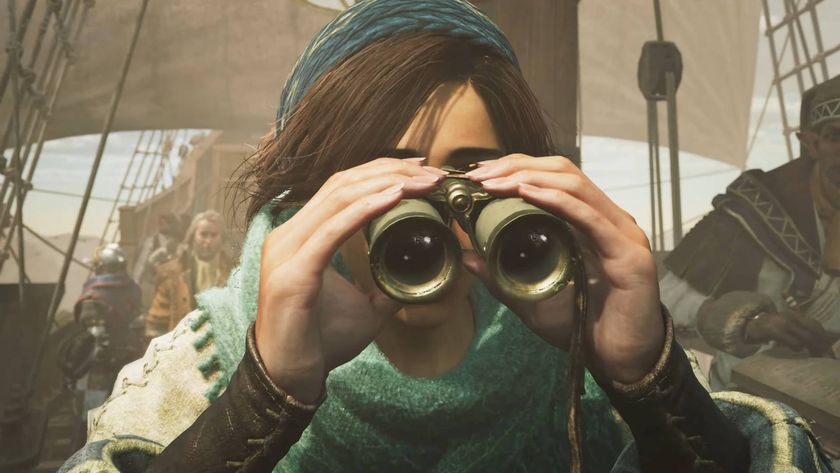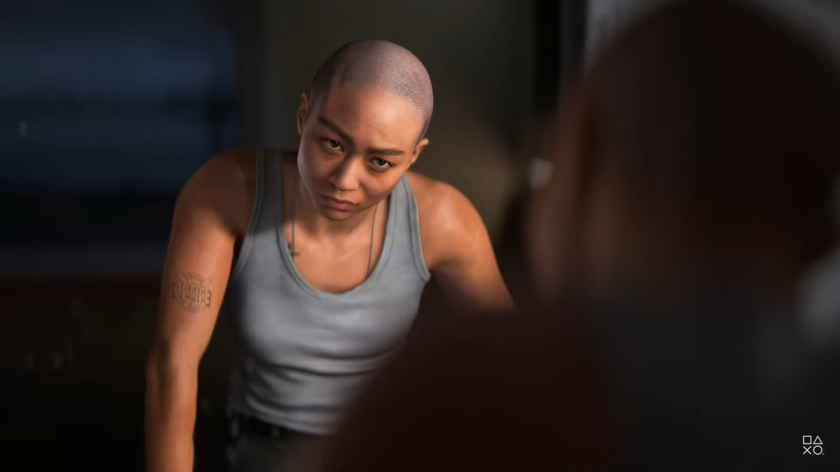The history of Animal Crossing: How the series evolved from an N64 oddity to a Nintendo Switch system seller
As Animal Crossing turns 20, we reflect on the impact and evolution of the series from Dobutsu no Mori to Animal Crossing: New Horizons
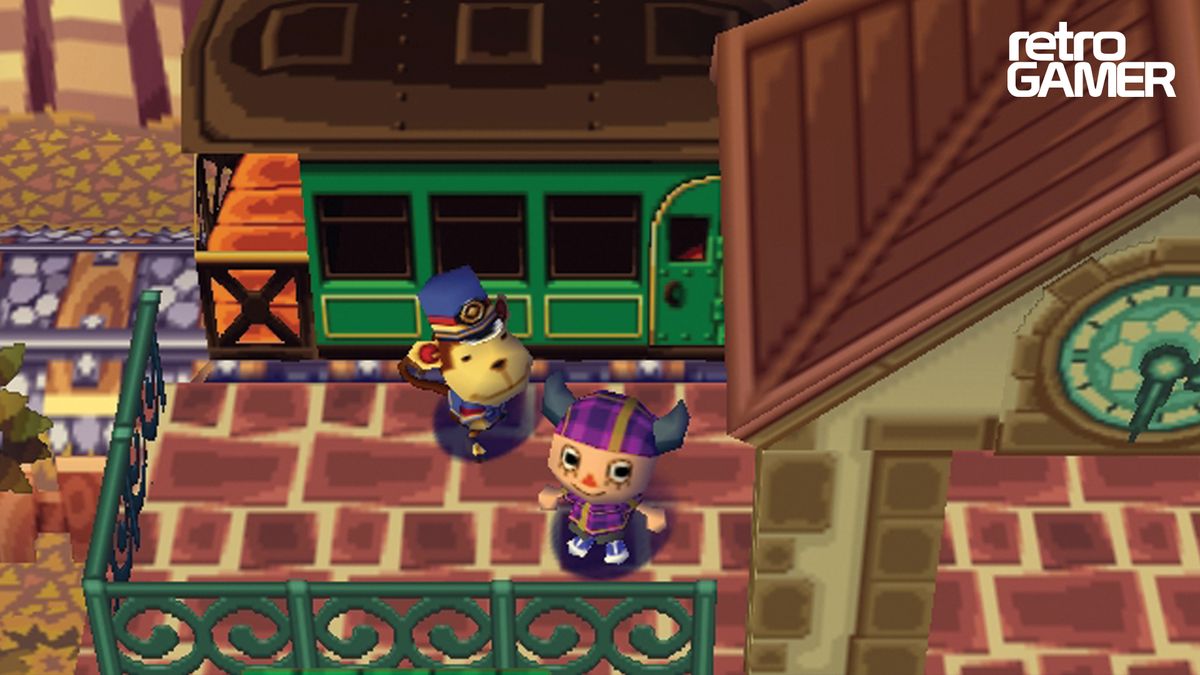
Few companies can turn failure into a success story quite like Nintendo. Whether it's the Wii U games that tanked on release but are suddenly must-have games on Switch, or turning the fortunes of the laughed-out-of-town DS around almost overnight and growing it into one of the most successful handhelds ever, the Midas touch is very real. Even in its darkest hours, Nintendo has proven itself capable of coming back better than ever, and the history of Animal Crossing begins with what, in hindsight, has to be seen as one of the greatest misplays in the company's history.
Whether through stubbornness, legal landmines, reliance on existing expertise or something else entirely, the N64 was the only console of its generation that wasn't riding the CD wave. But as the benefits of this new medium came to light and close partners started taking their games to platforms where they could both expand their horizons and mass-produce products for less, Nintendo reluctantly reached for the 'conform' button. Well, sort of.
So botched was the Japan-only 64DD disc add-on for the N64 that it warrants further discussion. The add-on was announced before the N64 itself even shipped, and offered support for a magnetic disk solution that could only offer 10% of the capacity of a CD. The promise of cartridge load times with disc capacities and internet connectivity was ahead of its time in terms of vision, but by the time of its arrival in December 1999 it was decidedly behind it in execution, and the 64DD ended up with just nine released titles. However, it's the list of planned games that ended up elsewhere as a result of this abject failure that proves far more interesting.
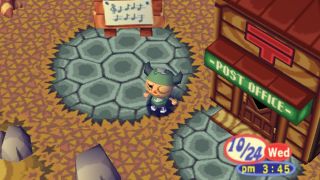
"One of the flagship features of the 64DD was to have a system-level real-time clock, which the very concept of Dobutsu No Mori was built around"
Series like Dragon Quest and Resident Evil took their next games to new consoles, most of the more ambitious projects that required the hybrid tech were cancelled outright, while many huge first-party titles like Zelda, Donkey Kong and Paper Mario were scaled back to work as pure cart-only games for N64. You might see the title Dobutsu No Mori among the list of such games that eventually made their way to N64 and think little of it, but it's actually a pretty big deal – that's what you might know as Animal Forest, the quirky and unique village life simulation that would later be upgraded, improved, and re-released the following generation as Animal Crossing.
One of the flagship features of the 64DD was to have a system-level real-time clock, which the very concept of Dobutsu No Mori was built around. In order to ship the game on cartridge, Nintendo needed to include a clock chip in the cart itself to facilitate the game's direct correlation between real-world time and in-game time – a more complex and costly process that caused the game to release right at the tail end of the N64's life in April 2001, just a few months before the launch of the GameCube. Despite the game's charming aesthetic and unique premise, it was swiftly buried under hype for more technically impressive games, but Nintendo wasn't going to let the animals escape quite so readily.
Instead, the decision was made to port Dobutsu No Mori across to the GameCube in order to give the game a second chance. The on-board clock and calendar of Nintendo's new console opened up even more possibilities and its graphically simple nature made moving home less demanding that it might have been for other more technically challenging games, allowing Nintendo to get the enhanced version onto GameCube in Japan by the end of that same year. The villagers weren't quite ready for an overseas visit just yet, however – unsurprisingly, a game about conversing with hundreds of unique characters in unique scenarios is quite the project for a localisation team, causing the US version to land nine months later in September 2002. The PAL release didn't come until a full two years after that, finally showing up in September 2004.
Finding the fun in busywork
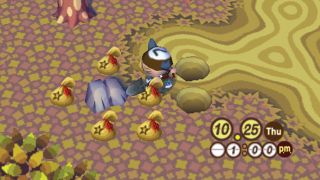
Animal Crossing is a game where you do… well, not a lot, really. It's one of the most chilled-out games ever made, one where you just wander around your little village, making friends with the neighbouring animal folk, and doing menial tasks to slowly, slooowly chip away at your crushing debt to resident capitalist tyrant Tom Nook – the devil in a raccoon disguise, basically. His laissez-faire approach to collecting his dues is welcome, but he still charges exorbitant fees just to improve your squalid little living space into something you can be proud to call a home, tempting you all the while with an ever-changing stock of neat furniture and useful tools that will only serve to drain your Bells – the game's suitably quaint currency – and prolong the process of upgrading and expanding your homestead. Similarly, museum curator Blathers would have you turn over valuable fossils, fish and bugs to him in the interest of preservation, though these are among the more lucrative items to sell for healthy profits.
Sign up to the 12DOVE Newsletter
Weekly digests, tales from the communities you love, and more
You've got a raccoon exploiting your materialistic nature on one side and an owl tapping into your completionist compulsions on the other, a pincer movement designed to keep your Bell balance in check and drag out the process of one day maybe ridding yourself of debt… It's a delightful and relaxing game at face value but viewed like this, it can almost feel like a busman's holiday – a fuzzy, primary-coloured recreation of what is taking place on the other side of the television screen for many of us.
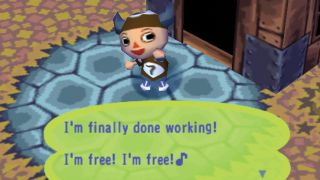
"You've got a raccoon exploiting your materialistic nature on one side and an owl tapping into your completionist compulsions on the other"
Why is this not a problem? Well, is it fine for these woodland critters to intentionally slow down the one part of the game that can be seen as making genuine, tangible gameplay progress? Well, the answer is twofold. First off, the day-to-day rigmarole isn't a grind – it's what's fun about the game. It's not something designed to be played for hours at a time, rather an experience best enjoyed piecemeal over a much longer time frame. Regular events and holidays promote return visits even when you might not otherwise have planned to play, while the simple act of checking in daily to see what's new in the village is satisfying in its own way – there are always new things to dig up, catch, harvest and work for, and even just seeing your home and its surroundings at different times of day and during different seasons helps you develop an attachment to this second life you've chosen for yourself, as well as with those who surround you.
That's the second reason why slow progress isn't an issue: it makes the connections you make and the bonds you develop with the other villagers feel more special, more important, more real. Check in daily with your furry friends and they'll meaningfully grow around you, adopting your mannerisms and fashion, writing you letters, offering you gifts and even expressing concern when you don't show your face in town for a few days. The more you play, the more you become part of the town, and coming back to the game after a little time away to a letter from a villager telling you that they've moved away can be a bitter pill to swallow. But there'll be new friends to make. There always are, forever.
Get connected
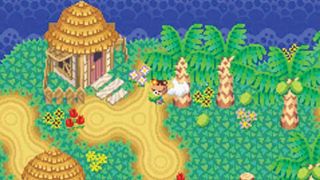
For a game born of failed hardware, it was somewhat surprising to see Animal Crossing court console add-ons for a second time with its support for the e-Reader Game Boy Advance card scanner. The game already supported linking to a GBA for several novel features, primarily the ability to visit the offshore island in search of rare fruits and extra Bells, but also to offer a pattern designer tool for use at the clothes shop and to allow handheld play of some of the featured NES games that players might be able to find, win, or buy for their homes.
The e-Reader support took this a step further, allowing players to scan special collectible cards via a connected GBA and e-Reader to introduce new elements to the town – music cards could change the town's tune to be one of wandering musician KK Slider's songs, pattern cards offered unique (often Nintendo-themed) clothing designs, while scanning a character card would cause that particular animal to write to the player with a gift. It was a novelty at best and wasn't even included for the PAL release, but the four sets of released cards still serve as a cool collector's item for fans, even if only a few of them ever offered anything that bordered on useful in the game.
While this low-level GBA interaction made it pretty clear that the handheld wasn't capable of pushing out a full Animal Crossing game of its own, the fact that its successor launched with an N64 port as its flagship launch title told an entirely different story. The little-and-often gameplay style of Animal Crossing made the title a perfect fit for a portable console like the DS, with Animal Crossing: Wild World arriving just outside the handheld's first year. It was a perfect storm – the console was struggling to find its footing, but here was this game with universal appeal and a playstyle that couldn't be more perfectly suited to a portable system, and Wild World proved to be a monumental success, eventually bagging itself a place in the top ten most successful games in the system's entire library.
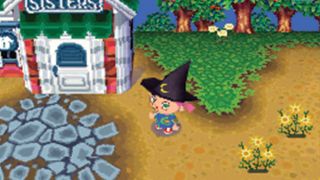

If you want in-depth features on classic video games delivered straight to your doorstop, subscribe to Retro Gamer today.
It was a well-deserved victory, too. Wild World iterated on Animal Crossing's core concepts spectacularly, doing away with screen transitions to make the full village one big open play space (replete with a new 'rolling' visual style to make it feel even larger), offering a second screen and touch control for simpler inventory management, and incorporating online components to allow friends to visit one another remotely, although removing timed holiday events in order to ease the localisation process was met with some criticism. This simplification did allow Nintendo to get the game out across all major territories in just three months compared to the original's three years, though, so it proved to be a sacrifice worth making in the interest of getting everyone playing at the same time.
After a rather innocuous inception, Animal Crossing was finally a top-flight brand for Nintendo – in terms of first-party DS titles, only the holy trinity of Mario, Zelda and Pokemon tracked better, in fact. It came as no surprise, then, that Nintendo would look to continue this success on its must-have new home console and the insane popularity of the Wii served as a perfect launchpad to propel this charming franchise to even greater heights. What a shame, then, that Let's Go To The City (or City Folk, as it was known in the US) managed to miss the point so spectacularly.
This is a series that revels in the escapism of quiet village life and while it was more or less business as usual on that front (with seasonal holidays reinstated and a few minor improvements), the inclusion of a new city area to visit really put pay to the idea of settling down in a remote rural village away from the hustle and bustle of urban life. While the core loop of Animal Crossing may not be the easiest of things to expand or iterate upon in any meaningful way, this just felt like a misstep, a move at odds with what the game was all about. The addition of optional voice chat during online multiplayer really didn't sit right, either – in a fantasy world where everyone speaks in adorable gobbledegook noises and twee catchphrases, the last thing you want to hear is another human gibbering on in the background.
Turning over a New Leaf
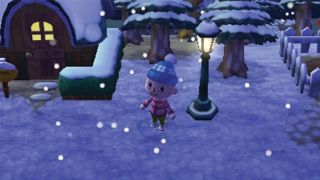
But what better way to right the ship than by leaving these odd design decisions in the past and turning over a 'new leaf'. Returning to handhelds in the hope of replicating the success of Wild World, Animal Crossing: New Leaf arrived on 3DS in 2013 and for the first time, it made meaningful, productive and player-friendly changes to the core concept. Rather than coming into town as a fresh-faced nobody, you were instead welcomed as the town's new mayor – a role that proved to be just as easy as Tortimer had made it look for the previous decade.
It was a new system that didn't change the core gameplay loop one bit, but that catered better to individual habits and play styles, letting those with limited play time pass bills to have shops open earlier or close later, for instance, or to have other villagers assist in upkeep to keep your town spotless. This new position of power also allowed for significant quality-of-life improvements, from building bridges to making remote spots on the map more accessible to constructing new facilities, each with their own functions and additional characters to meet. While the core gameplay changed little, these seemingly minor tweaks made it all the more respectful of player time – a welcome feature in a game designed to be played daily and for months on end.
The gameplay utility of the city's extra facilities was retained, but crossing the train tracks to visit a slightly suburban-feeling row of shops and houses felt less out of place than upping sticks for a full-on city, with buildings on the outskirts retaining that rustic feel of the main village and even including some staple components such as the museum to free up even more space in your own little plot of paradise. With Nook's kids taking over the general store, Tom himself moved into the real estate business (because of course he did) and continued to scalp new residents for substandard housing… not even the mayor is safe from the dollar-signs-for-eyes raccoon fiend, it appears.
Looking to New Horizons
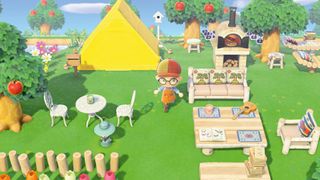
Still, Tom Nook's most audacious scheme was reserved for Animal Crossing: New Horizons, which launched on Nintendo Switch in 2020. Tricky Tom has sold you a travel package to a deserted island paradise, and expects you and a couple of fellow scam vict– erm, holidaymakers, to develop a new settlement from scratch, beginning with nothing more than some hastily erected tents. Thanks to the island's lack of basic infrastructure, it has you exploring the island to gather raw materials – a pretty crucial part of the crafting system, which allows you to build new tools and furniture.
There's a rather agreeable hippy commune vibe to this whole arrangement, until you remember that a certain raccoon is getting a ready-made holiday resort out of the whole deal. New Horizons offers an unprecedented freedom to develop your community, as you can choose where animals set up their new homes and even reshape the island itself with the new magic shovel, a feature fans have dreamed of for years.
The series has been on quite the journey, since Dobutsu no Mori made its debut on April 14, 2001. 20 years later, Animal Crossing has surely surpassed even Nintendo's wildest expectations. New Horizons is the fast-selling Nintendo game in Europe and one of the company's best-selling games of all time. It's reported that Animal Crossing: New Horizons shifted 31.18 million copies in 2020 alone, making it the second highest-selling Switch game so far.
It's quite remarkable that Animal Crossing is up there with Nintendo's top franchises despite being their polar opposite – so many Nintendo titles are built on pure, glorious gameplay, while Animal Crossing features very little of what would traditionally be described as such. Regardless, its unique nature as a sedate and charming console game that can be played all year round makes Animal Crossing something we'll never stop playing. Mainly because we're perpetually in debt to a ruthless capitalist raccoon, but also because they're wonderful games to kick back and enjoy when you just want to turn off the outside world for an hour or two.
This feature first ran in issue 205 of Retro Gamer magazine. For more fantastic features like the one you just finished reading, subscribe to Retro Gamer to get the magazine delivered to your door or digital device.
Animal Crossing: New Horizons tips | Animal Crossing: New Horizons fish guide | Animal Crossing: New Horizons bugs guide | Animal Crossing: New Horizons amiibo support explained | Animal Crossing Sanrio amiibo cards and items | Animal Crossing: New Horizons flowers guide | Animal Crossing: New Horizons sea creatures guide | How to improve your Animal Crossing: New Horizons island rating | Upcoming Animal Crossing: New Horizons events | Animal Crossing: New Horizons turnips | KK Slider secret songs in Animal Crossing | Animal Crossing: New Horizons golden tools | Animal Crossing: New Horizons secrets
Retro Gamer is the world's biggest - and longest-running - magazine dedicated to classic games, from ZX Spectrum, to NES and PlayStation. Relaunched in 2005, Retro Gamer has become respected within the industry as the authoritative word on classic gaming, thanks to its passionate and knowledgeable writers, with in-depth interviews of numerous acclaimed veterans, including Shigeru Miyamoto, Yu Suzuki, Peter Molyneux and Trip Hawkins.

